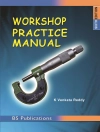This book presents tensors and differential geometry in a comprehensive and approachable manner, providing a bridge from the place where physics and engineering mathematics end, and the place where tensor analysis begins.
Among the topics examined are tensor analysis, elementary differential geometry of moving surfaces, and k-differential forms. The book includes numerous examples with solutions and concrete calculations, which guide readers through these complex topics step by step. Mindful of the practical needs of engineers and physicists, book favors simplicity over a more rigorous, formal approach. The book shows readers how to work with tensors and differential geometry and how to apply them to modeling the physical and engineering world.
The authors provide chapter-length treatment of topics at the intersection of advanced mathematics, and physics and engineering:
• General Basis and Bra-Ket Notation
• Tensor Analysis
• Elementary Differential Geometry
• Differential Forms
• Applications of Tensors and Differential Geometry
• Tensors and Bra-Ket Notation in Quantum Mechanics
The text reviews methods and applications in computational fluid dynamics; continuum mechanics; electrodynamics in special relativity; cosmology in the Minkowski four-dimensional space time; and relativistic and non-relativistic quantum mechanics.
Tensor Analysis and Elementary Differential Geometry for Physicists and Engineers benefits research scientists and practicing engineers in a variety of fields, who use tensor analysis and differential geometry in the context of applied physics, and electrical and mechanical engineering. It will also interest graduate students in applied physics and engineering.
Table of Content
General Basis and Bra-Ket Notation.- Tensor Analysis.- Elementary Differential Geometry.- Differential Forms.- Applications of Tensors and Differential Geometry.- Tensors and Bra-Ket Notation in Quantum Mechanics.- Appendices.
About the author
Dr. Hung Nguyen-Schäfer is a senior technical manager in development of electric machines for hybrid and electric vehicles at EM-motive Gmb H, a joint company of Daimler and Bosch in Germany. He received B.Sc. and M.Sc. in mechanical engineering with nonlinear vibrations in fluid mechanics from the University of Karlsruhe (KIT), Germany in 1985; and a Ph.D. degree in nonlinear thermo- and fluid dynamics from the same university in 1989. He joined Bosch Company and worked as a technical manager on many development projects. Between 2007 and 2013, he was in charge of rotordynamics, bearings and design platforms of automotive turbochargers at Bosch Mahle Turbo Systems in Stuttgart.
He is also the author of two professional engineering books: Rotordynamics of Automotive Turbochargers, Springer (2012) and Aero and Vibroacoustics of Automotive Turbochargers, Springer (2013).
Rotordynamics of Automotive Turbochargers, Springer (2012) and Aero and Vibroacoustics of Automotive Turbochargers, Springer (2013).
Dr. Jan-Philip Schmidt is a mathematician. He studied mathematics, physics, and economics at the University of Heidelberg, Germany. He received a Ph.D. degree in mathematics from the University of Heidelberg in 2012. His doctoral thesis was funded by a research fellowship from the Heidelberg Academy of Sciences, in collaboration with the Interdisciplinary Center for Scientific Computing (IWR) at the University of Heidelberg. His academic working experience comprises several research visits in France and Israel, as well as project works at the Max-Planck-Institute for Mathematics in the Sciences (MPIMIS) in Leipzig, and at the Max-Planck-Institute for Molecular Genetics (MPIMG) in Berlin. He also worked as a research associate in the AVACS program at Saarland University, Cluster of Excellence (MMCI).












